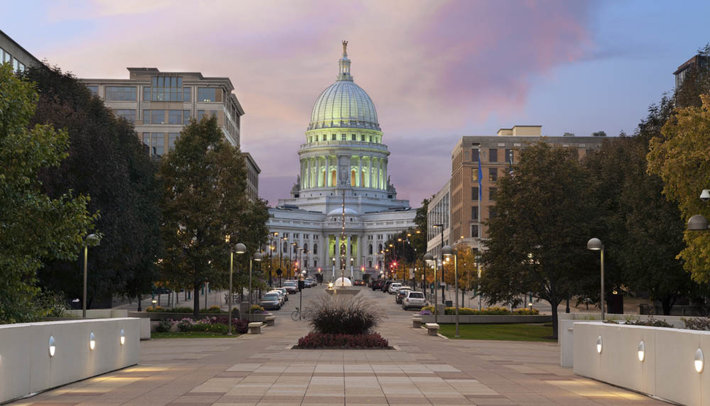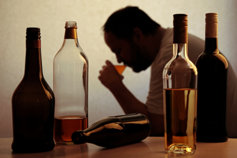Wisconsin Drug Addiction Treatment

In most states, it’s illicit drug abuse that takes center stage. In Wisconsin, the focus should be on alcohol consumption, abuse, and addiction.
The tipoff is a review of statistics for publicly-funded addiction treatment. In most parts of the U.S., the number of those being treated for alcoholism is just slightly higher than treatment for marijuana, cocaine and other drugs. In Wisconsin, the number is overwhelmingly higher. In 2008, a total of more than 29,000 people in Wisconsin found addiction treatment. Seventy-four percent - more than 21,000 - were being treated for alcoholism. Three-quarters of these people needed treatment for alcoholism alone and the remaining quarter also had a problem with a secondary drug.
Highest Consumption and DUI Rates in the United States

Perhaps this makes sense since Wisconsin is the state where a brand of beer “made Milwaukee famous,” where one professional sports team is named the Brewers and a major sports stadium is named Miller Park. But the results of alcohol consumption in this state are as damaging as they are in any other state. Wisconsin has the country’s highest numbers of per capita alcohol consumption, underage drinking, binge drinking at any age, driving under the influence and alcohol-related motor vehicle fatalities.
High school students report the highest rate of alcohol consumption of any region in the country - 49 percent. Out of the whole population of Wisconsin, 69 percent drink and 24 percent binge drink at least once a month.
Laws in the state have only recently started to become tougher in relation to alcohol abuse while driving. But still, law enforcement officers are not allowed to run sobriety checkpoints like they do in many other states. And any minor, within reason, can sit down with an adult or guardian in a bar and be served a beer.
Wisconsin Also Has Drug Trafficking and Addiction Problems
Like its neighbors, Wisconsin is subjected to illicit drug trafficking and distribution that causes its citizens to become addicted. Crack cocaine is readily available in most urban areas, marijuana is widely abused, heroin is present in Milwaukee, Racine and Madison and abuse is increasing among young Caucasians in the suburbs who may have first become addicted to prescription painkillers.
The state’s proximity to the Chicago and that city’s abundance of drug trafficking channels means that all Wisconsin’s drug dealers need to do is make the run down to Chicago every couple of weeks to lay in a supply. Accordingly, Wisconsin’s drugs of abuse and trafficking patterns closely resemble those of major northeastern cities. That pattern may be changing, however. Mexican drug trafficking organizations, who do not strongly control this drug market as they do in so many other areas, are making inroads with local dealers by offering better prices than the Chicago suppliers can.
Some Drugs Being Abused Don’t Come from Southwest Border or Chicago
Wisconsin has a growing problem with prescription drug abuse. These drugs don’t need to be trucked across the border in secret compartments. They come from unscrupulous medical professionals; people who go from doctor to doctor, complaining of symptoms, collecting their drugs and then selling them on the street; prescription fraud; and Internet purchases. Young people may party with these drugs a few times, then find they are addicted to OxyContin or hydrocodone, or they may abuse Xanax or Ritalin and become addicted.
If they become addicted to an opiate or opioid like the painkillers, they may find that heroin is less expensive and more readily available. But the purity of heroin in Wisconsin varies greatly, from 16 percent to 89 percent purity. This makes it very difficult to get the dosage right. In Milwaukee County in 2007, 20 people died in heroin-related deaths. Fifty more succumbed in methadone-related deaths. But it’s the “other opiate/opioid” category that was the biggest. In 2007, 88 people were lost to deaths related to use of oxycodone, morphine, codeine or hydrocodone.
Most Addicted People Don’t Wish to be Addicts
It’s pretty safe to say that people don’t start abusing drugs with a wish to become an addict. And most of those who are addicted would like to quit, even if this wish is deeply buried under a fear of withdrawal and a conviction that they would never be able to stay clean for long. Addiction is driven by a physical and mental compulsion. Many addicts continue using drugs so they can feel “normal” and function in daily life.
It takes a comprehensive program to effect drug recovery. Drug addiction treatment doesn’t happen in the 28 to 30 day programs of many substance abuse treatment centers. It takes longer than that to build a new drug-free life to replace the one destroyed by addiction, whether it was alcohol addiction or drugs that started the problem off.
The Narconon drug and alcohol rehabilitation program is a residential drug recovery program that helps a person through the process of replacing addiction with a drug-free life. Graduates have restored their self-esteem, recovered their personal values, and know how to make drug-free decisions as a result of their life skills courses. A thorough, holistic detoxification process helps or even, for some, eliminates cravings.
The Narconon program not only addresses the debilitating effects of drug abuse on the mind and body, but also resolves why a person turned to drugs in the first place. As a result, a person can graduate from the program into a new life free from drug use.
To those who wish to break the pattern of drug use or drinking that is destroying their lives, Narconon provides a unique drug recovery program that works.
Contact Narconon to find the nearest center to you.
 ®
®